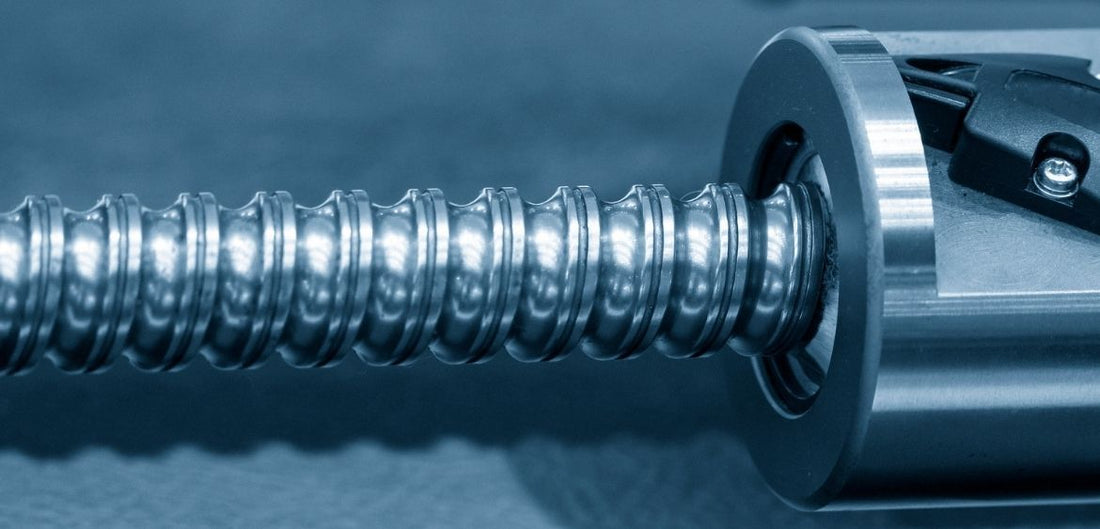Lead screws have been widely used to generate linear motion from a rotary motor. It can convert circular motion to linear motion by turning the screw with the nut fixed in place or turning the nut while the screw remains in place. Today, we will look at two of the most popular screw types in the automation industry, namely, ACME screws and ball screws. Also, how does a ball screw work and how does it compare to an ACME screw?
What Is an ACME Screw?
ACME screws use a trapezoidal shape thread to roll on to the lead screw. As the shaft rotates as the rotatory motor turns, the threads push the shaft nut forward or backward depending on the direction of the rotating motion. This transfers the circular motion of the motor into linear motion on the shaft. All Progressive Automation’s actuators use the ACME screw drive systems. For this example of ACME screw linear actuators, we’ll be using one of our PA-14 mini linear actuators. We have a wide range of electric linear actuators for any application – click to browse!

ACME screws provide many advantages for its applications. With the right material for the nut, the ACME screws can achieve self-lubrication. Our linear actuators use polymer nuts, which provide a very low frictional force. This can reduce or even eliminate the need for lubrication.
On the other hand, the metallic nut can provide a higher force load, but it will also have a higher frictional force and require lubrication. ACME screw linear actuators are generally a good choice where vertical applications are concerned.

It can prevent back driving because of the inherent frictional force between the trapezoidal thread and the nut. With a preloaded nut, it can eliminate the risk of backlash entirely. This broadens the application scope of ACME screw linear actuators greatly.
It is also safer for users to operate their linear actuator when the unit has a static load capacity to hold whatever weight is in place. Other benefits of the ACME screws include a low operating noise and a low manufacturing cost.

ACME screws may have a lot of great advantages but there are two major limitations that come from using them, namely, a low efficiency and shorter life cycles. Due to the high frictional force between the nut and ACME screw thread, most units can only achieve 20% to 40% efficiency depending on the material of the nut and lead screw. While this prevents units’ back drive, it also requires more motor torque to achieve the same force compared to its ball screw counterpart. This means a using ACME screws will have a lower force, speed, and duty cycle rating than a ball screw in a linear actuator using the same motor.
Advantages
- Lower cost
- Lower operating noise
- Prevent back drive
- Self-lubricating
Disadvantages
- Shorter life cycle
- Lower efficiency
What Is a Ball Screw?
Ball screws use circular threads on both the screw and the nut, which provides a helical raceway for ball bearings to slide along the threads. The ball bearings roll through each helical raceway as the nut or the screw moves, then pushes either the screw or nut forward, creating linear motion.
Ball screw efficiency is higher than an ACME screw since they suffer minimum frictional loss thanks to the ball bearings. The nut and screw thread do not make contact directly but move along using ball bearings rolling between them. A ball screw drive system is able to achieve 70% to 95% efficiency. This will allow ball screw actuators to have a higher force, speed, and duty cycle rating. With lower frictional force, its nut and screw suffer less physical wear and tear, hence a longer life cycle.

The major setback for ball screw linear actuators is that it can easily back drive due to its low internal friction. This creates a safety concern for its users since it cannot hold its load in place when not in operation unless a braking system is in place. When a ball screw linear actuator is in operation, the ball bearings will constantly roll around inside the nut and screw, which causes a higher noise level than its ACME screw counterpart. The manufacturing cost for ball screws is also higher than the ACME screws.
Advantages
- Higher efficiency
- Longer life cycle
- Higher duty cycle
- Higher speed
Disadvantages
- Louder operating noise
- Back drive
- Higher cost
Final Word – ACME Screw vs Ball Screw
Both ACME screws and ball screws are widely used in the automation industry. At Progressive Automations, we use ACME screws as they provide a more reliable design for general applications. No back drive and low cost make this design a very flexible solution for most automated linear motion applications. Ball screws, on the other hand, provide a more expensive, smaller scope solution, but with higher performance ratings.




